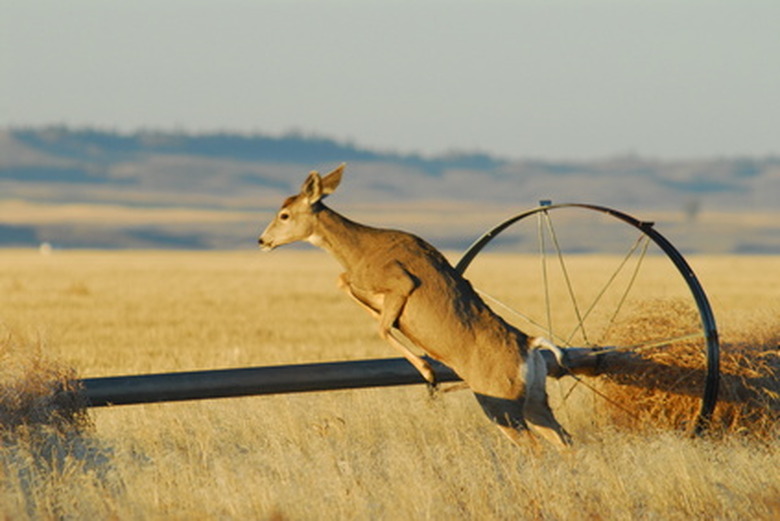Body Parts Of A Deer
Deer are mammals that belong to the family Cervidae. Many of us enjoy feeding and petting them in zoos while others enjoy hunting them for their meat, skins and antlers. Other deer body parts are used in Eastern medicine. The deer possesses body parts that most other mammals have, as well.
Head
Perched on top of a deer's neck, which is thick and long, is its head. The head is the home to the deer's brain, eyes, nose, mouth and ears. While the overall structure of the head is fairly similar among all deer, the coloring and patterns vary. For instance, the white-lipped deer gets its moniker from white patches that are found on its upper and lower lips and throat, states AnimalInfo.org. In addition, the head of the white-tailed deer, along with other upper body parts, turns reddish-brown in the warmer months and fades to a dark gray in the colder times of the year.
The head also houses the deer's antlers, which come through at the top of its head. Females never have antlers and males' antlers generally fall off in the spring before beginning to grow back almost immediately.
Legs
Deer have four legs, all of which are used for walking or running. Instead of a foot that has toes or pads, deer have hooves at the end of their legs. The hooves are hard and often formed into two pieces. The hooves are useful in running and climbing. White-lipped deer make clicking sounds with their hooves when they walk that are similar to the sounds caribou make, states the AnimalInfo.org. Deer's legs are skinny, yet strong, as they need to hold the deer's body weigh, which ,depending upon the species, can be as much as 350 lbs., claims the Western North Carolina Nature Center.
Trunk
The trunk of the deer is attached to the legs, neck and tail. The trunk is the part of the body that holds the deer's spinal cord, heart, stomach, kidney, liver, lungs and intestines, among other vital organs. Depending upon the species, the color of the trunk can be one color or have spots throughout the hair. The tail is attached to the back of the trunk, covering the deer's anus. When frightened, white-tailed deer hold their tails straight up, revealing the white pattern they possess underneath, which is a sign to other deer that danger is present.
References
Cite This Article
MLA
Vecchioni, Heather. "Body Parts Of A Deer" sciencing.com, https://www.sciencing.com/body-parts-deer-6706816/. 22 November 2019.
APA
Vecchioni, Heather. (2019, November 22). Body Parts Of A Deer. sciencing.com. Retrieved from https://www.sciencing.com/body-parts-deer-6706816/
Chicago
Vecchioni, Heather. Body Parts Of A Deer last modified March 24, 2022. https://www.sciencing.com/body-parts-deer-6706816/
